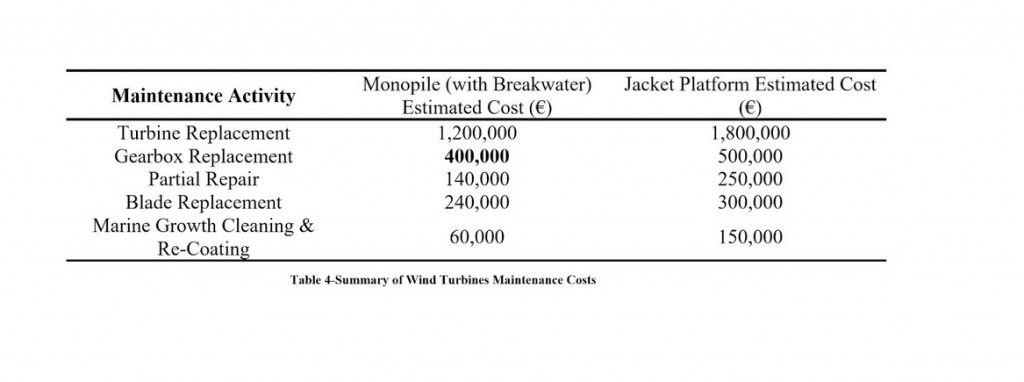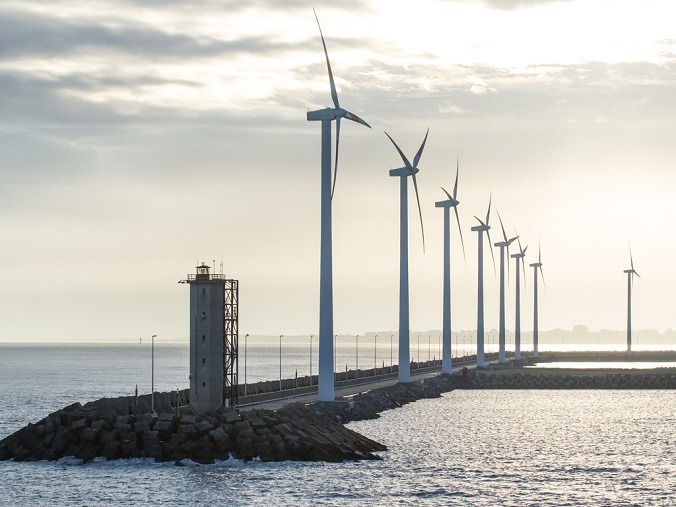
An offshore wind turbine is a large wind-powered generator installed in seas or oceans to capture strong and steady offshore winds for electricity generation. Winds over the ocean are generally stronger and more consistent than on land due to the absence of obstacles that can impede airflow (NOAA, 2012). Compared to onshore turbines, offshore wind farms benefit from higher wind speeds, unobstructed airflow, and minimal noise concerns, making them both more efficient and less disruptive. Their location also allows for the installation of larger, more powerful turbines (up to 15 MW) that generate greater amounts of energy. Additionally, offshore wind power plays a key role in reducing fossil fuel dependence, cutting CO₂ emissions, and advancing global climate goals, making it a crucial step toward a sustainable energy future. On average, offshore wind turbines generate more power, with capacities reaching up to 15 MW, compared to the average onshore turbine capacity of 2.5–3 MW (National Grid, 2023).
Integrated Concept
Traditionally, jacket platforms are employed for larger wind turbines in deeper waters due to their structural stability and cost-effectiveness in such environments (National Renewable Energy Laboratory, 2016). However, integrating monopile wind turbines into existing breakwaters offers a unique advantage. Breakwaters are often situated in deeper waters where wind speeds are higher and more consistent, making them an ideal location for wind energy production (Coastal Wiki, 2023). By utilizing the inherent stability of breakwaters, the need for additional support structures like jacket platforms is eliminated, as the breakwater itself provides the necessary foundation and protection for the wind turbines.
In typical offshore wind turbine installations, jacket platforms are used to support turbines in deeper waters, where monopile foundations may not provide sufficient stability. This is particularly important in areas with significant wave action, as the jacket structure’s design allows it to withstand dynamic wave forces, ensuring the stability and longevity of the wind turbine (Wind Energy Science, 2019). However, when wind turbines are integrated directly into breakwaters, they can harness both wind and wave energy while benefiting from the breakwater’s structural integrity, reducing the need for separate jacket platforms.
Additionally, the wind turbines within the breakwater system generate renewable power that is directly utilized by offshore structures, reducing their dependence on fossil-fuel-based energy sources. This electricity can be shared with offshore oil and gas platforms, port facilities, or nearby coastal infrastructure, supporting a hybrid energy model that enhances overall energy efficiency and sustainability. By leveraging this integrated approach, offshore assets benefit from a reliable, self-sustaining energy supply, minimizing environmental impact while ensuring long-term operational resilience.
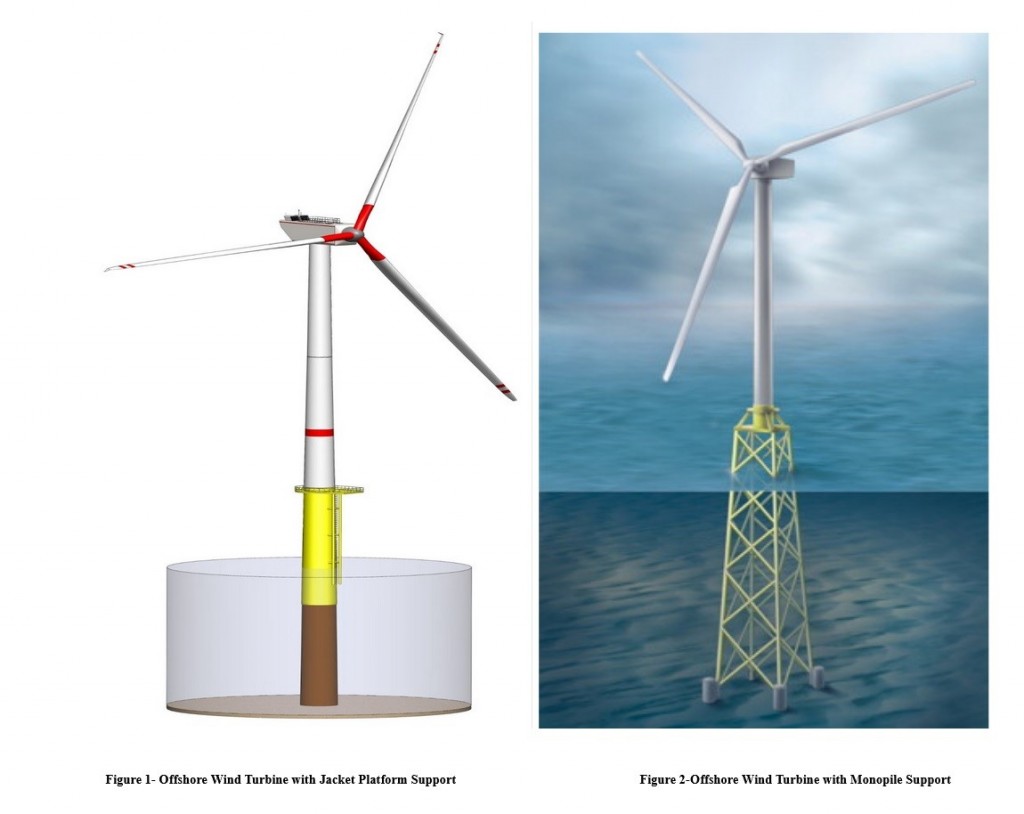
Material
The construction of offshore wind turbines involves significant material usage, which varies depending on the type of foundation and support structure.
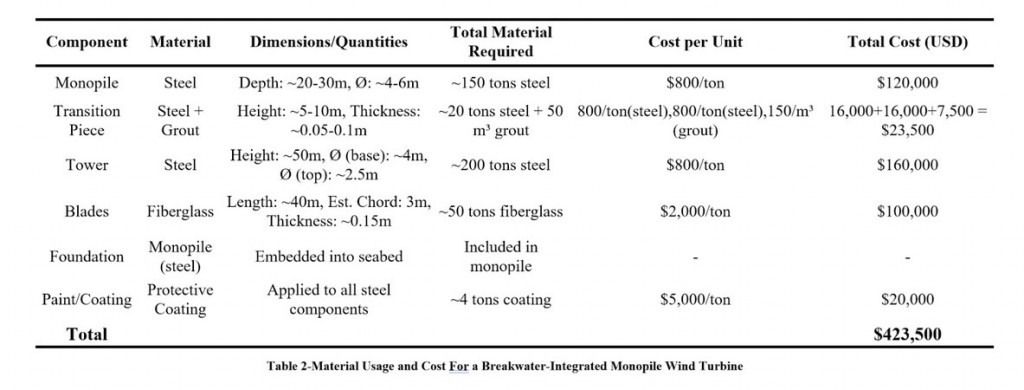
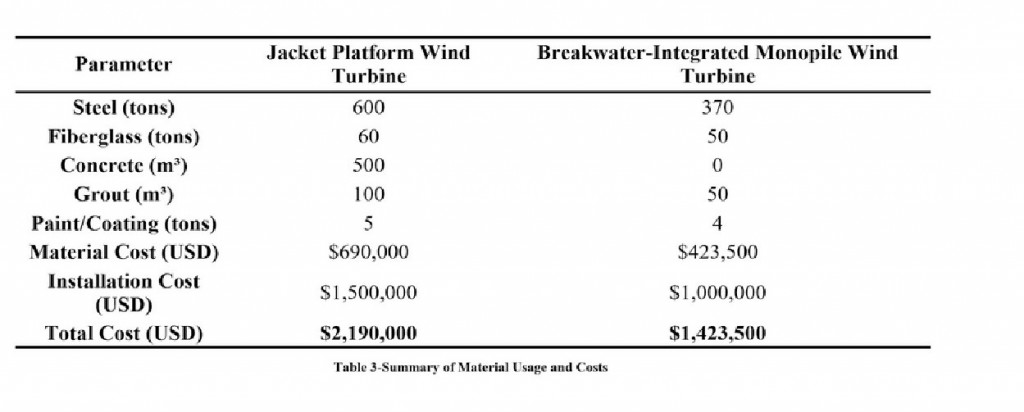
The tables compare material usage and costs for a Jacket Platform Wind Turbine and a Breakwater-Integrated Monopile Wind Turbine. The Jacket Platform requires more steel (600 tons vs. 370 tons), concrete (500 m³ vs. 471m³), and grout (100 m³ vs. 50 m³), resulting in higher material and installation costs. The total cost for the Jacket Platform is $2,190,000, while the Breakwater-Integrated Monopile costs $1,423,500. This results in a cost saving of $766,500 when opting for the Breakwater-Integrated Monopile Wind Turbine.
The maintenance cost comparison highlights that the Monopile integrated with Breakwater system is more cost-efficient across all activities. Turbine and gearbox replacements are significantly cheaper, with savings of €600,000 and €100,000, respectively, due to easier accessibility and simpler structural design. Partial repairs and blade replacements also incur lower costs, reflecting reduced complexity in the monopile structure. Additionally, marine growth cleaning and re-coating are less expensive (€60,000 vs. €150,000) because the monopile’s smooth, uniform surface minimizes biofouling, reducing both frequency and effort required for maintenance.
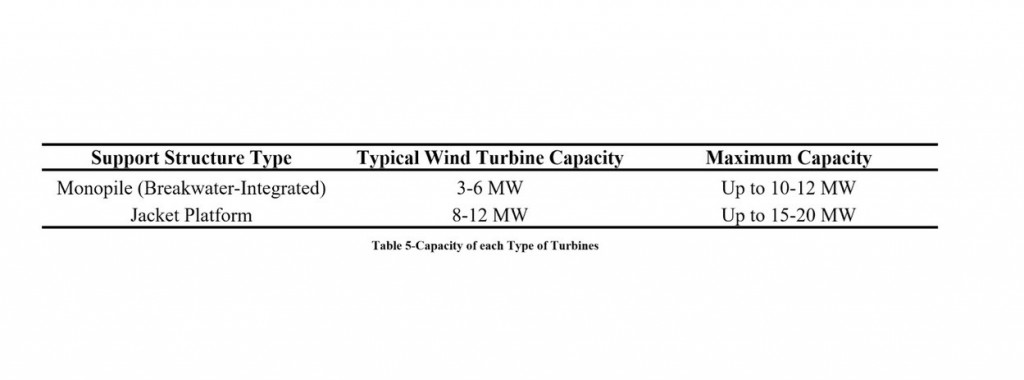
Integrating monopile foundations into breakwaters is cost-effective due to reduced structural and maintenance costs. Despite a lower maximum capacity (up to 10–12 MW), they offer sufficient performance for medium-scale projects. This dual-purpose design optimizes space and resources, making it a practical solution for offshore developments which is what we are aiming for in our integrated system.
Failure Rate Over the Lifetime
Wave-induced cyclic loads significantly influence fatigue failure in offshore wind turbine support structures. For monopile foundations, wave action is a critical design factor, with cyclic loads contributing substantially to fatigue damage, especially at the midline where bending moments are highest (Wang et al., Wind Energy, 2016). In contrast, jacket-supported turbines experience less fatigue stress concentration, with fatigue damage to jacket leg joints estimated at less than 20% of their fatigue capacity over a 25-year design life (Li et al., MDPI Sensors, 2024). However, integrating monopiles with breakwater structures reduces direct wave exposure, minimizing cyclic load impacts and enhancing fatigue resistance. This integration improves structural durability and reduces maintenance demands compared to traditional jacket platforms, making monopile-breakwater systems more efficient in harsh marine environments (Li et al., 2024; Wang et al., 2016).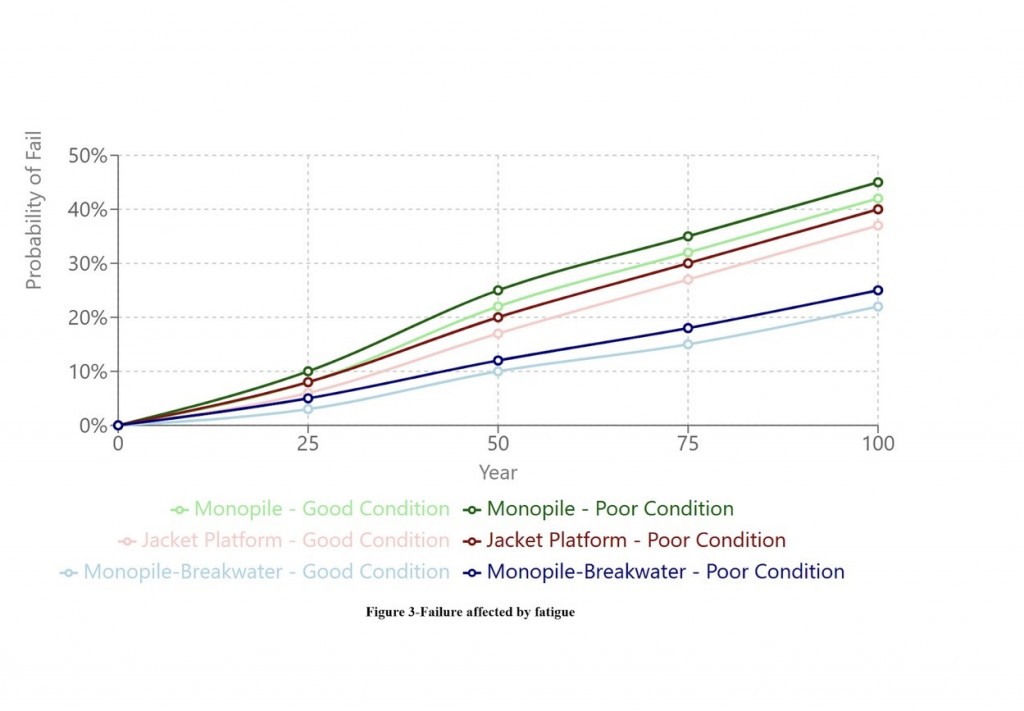
Breakwater Integration for Structural Optimization
In the integrated monopile-breakwater model, the turbine foundation is strategically placed inside the breakwater to achieve the following:
- Reducing fatigue due to wave horizontal loading
The breakwater acts as a damping barrier, dissipating wave energy before it reaches the turbine foundation. This significantly reduces cyclic stresses and bending moments, particularly at the mudline, where monopiles typically experience the highest fatigue-induced failure risks. - Providing safer operational space
By shielding the foundation from direct wave exposure, wave-induced vibrations and structural oscillations are minimized. This enhances overall system stability and ensures a safer environment for operational activities. - Providing safer and faster maintenance actions
Reduced wave exposure means that inspection, repair, and replacement tasks can be carried out under more stable conditions, reducing maintenance delays caused by harsh sea states. Additionally, the breakwater offers potential safe harboring points for maintenance vessels. - Reducing labor cost during maintenance
The decrease in wave-induced motion and structural degradation rates leads to lower maintenance frequency and repair demands. This reduces labor-intensive offshore interventions, ultimately decreasing long-term operational costs.
Additionally, computational fluid dynamics (CFD) and structural health monitoring (SHM) studies confirm that integrating monopiles with breakwaters significantly extends structural lifespan by up to 30% compared to traditional standalone monopiles (Wang et al., Wind Energy, 2016; Li et al., MDPI Sensors, 2024)
References
• Brussels Times. “Government Wishes to Double North Sea Wind Turbine Capacity.” The Brussels Times, 26 Oct. 2018, https://www.brusselstimes.com/47901/government-wishes-to-double-north-sea-wind-turbine-capacity.
• Wind Energy Science (2019). The Role of Jacket Structures in Offshore Wind Energy Systems. Retrieved from https://www.windenergyscience.net/articles/2019
• National Renewable Energy Laboratory (2016). Offshore Wind Technology Development Roadmap. Retrieved from https://www.nrel.gov/docs/fy16osti/64703.pdf
• Coastal Wiki (2023). Breakwaters and Offshore Wind Power Integration. Retrieved from https://www.coastalwiki.org/wiki/Breakwater_and_wind_energy
• Damiani, R., Dykes, K., & Scott, G. (2016). “A Comparison Study of Offshore Wind Support Structures with Monopiles and Jackets for U.S. Waters.” Journal of Physics: Conference Series, 753, 092003. HTtDOI: 10.1088/1742-6596/753/9/092003
• McAuliffe, F. D., & Norbeck, J. A. (2017). “Driving Cost Reductions in Offshore Wind.” LEANWIND Project Final Publication. https://www.leanwind.eu/wp-content/uploads/LEANWIND-final-publication-exec-summary.pdf

